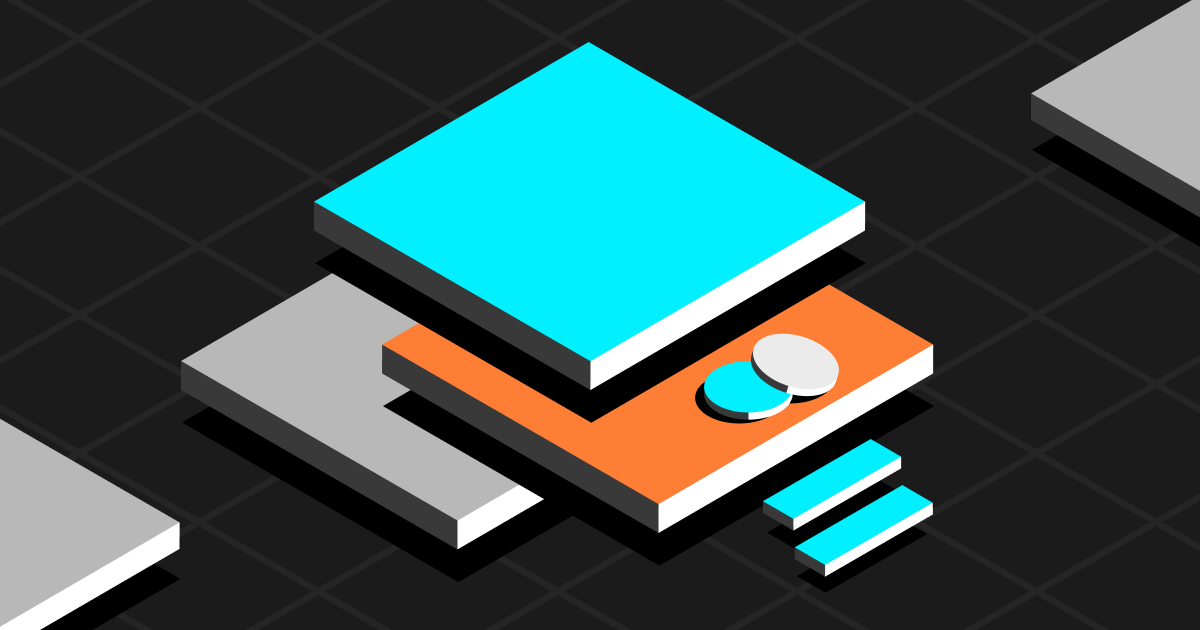The Rise of Layer-2 and Layer-3 Blockchains
TL;DR
- Layer-2 and Layer-3 blockchains are innovative solutions designed to enhance the scalability and efficiency of blockchain networks.
- The adoption of these solutions has seen significant growth, with over 30 running layer-2 blockchains for Ethereum alone.
- These advancements are revolutionizing the blockchain industry, making it more inclusive, user-friendly, and adaptable to diverse user needs.
What Are Layer-2 and Layer-3 Blockchains?
Blockchain, the revolutionary technology behind cryptocurrencies like Bitcoin, promised to reshape industries, disrupt centralized systems, and bring about a new era of trust and transparency. However, as blockchain adoption surged, so did the realization of its inherent limitations. At the heart of blockchain technology are the traditional layer-1 blockchains, acting as the foundational layer responsible for validating and recording transactions. While this architecture provides security and acts as the basis for the most robust decentralized ecosystems, it comes with inherent bottlenecks. One of the most significant limitations is the constrained transaction throughput. Popular layer-1 blockchains, like Bitcoin and Ethereum, can only process a limited number of transactions per second, resulting in sluggish confirmations and rising transaction fees during peak periods. This predicament not only hampers user experience but also hinders the scalability necessary for widespread adoption.
In the face of these hurdles, enter layer-2 and layer-3 solutions, also known as L2 and L3 respectively. They are innovative approaches designed to enhance the scalability and efficiency of blockchain networks. Rather than altering the core protocols or creating stand-alone chains, the layer-2 solutions lie on top of the underlying layer-1 blockchains. They take advantage of, complement, and work in tandem with the layer-1, creating an additional layer of infrastructure that helps alleviate the strain on the main chain. Meanwhile, layer-3 solutions create an interoperable ecosystem of multiple blockchains, providing horizontal scalability and enhanced efficiency. Together, they present a promising alternative for addressing the growing demand for faster transactions and lower fees, without sacrificing the decentralization that underpins the essence of blockchain technology.
The Explosion of Layer-2 and Layer-3 Solutions
With the promise of overcoming the scaling woes, L2 and L3 have captivated the imagination of the blockchain community, fueling a race for the ultimate scaling breakthrough. In recent months, the blockchain industry has witnessed an unprecedented surge in interest and development surrounding Layer 2 and Layer 3 solutions. At the moment, there are more than 30 running L2 blockchains for Ethereum alone and still counting. Prominent DeFi protocols like dYdX, Ripple, and Coinbase are now taking a bold step forward by launching their own Layer 2 and Layer 3 blockchains. Developers and blockchain enthusiasts are increasingly turning their focus to building and experimenting with such solutions. The availability of robust toolkits, developer-friendly ecosystems, and growing support from blockchain communities have made it more appealing to explore and contribute to L2 and L3.
List of Layer-2 Blockchains
The layer-2 blockchain list is as follows:
Underlying Chain
L2 Mainnet Name
Technology
Bitcoin
Lightning Network
-
Liquid Network
-
Omni Layer
-
Ethereum
Arbitrum
Optimistic Rollup
Optimism
Optimistic Rollup
Polygon zkEVM
ZK Rollup
zkSync Era
ZK Rollup
dYdX
ZK Rollup
Starknet
ZK Rollup
Immutable X
Validium
Loopring
ZK Rollup
Metis Andromeda
Optimistic Rollup
Base
Optimistic Rollup
OMG Foundation
Plasma
ApeX
Validium
Gnosis
Sidechain
Ronin
Sidechain
Mantle
Optimistic Rollup
Linea
ZK Rollup
ZKSpace
ZK Rollup
Sorare
Validium
Layerium
Optimistic Rollup
Deversi.Fi
Validium
Boba Network
Optimistic Rollup
LightLink
Optimistic Rollup
Aztec
ZK Rollup
DeGate
ZK Rollup
Zora Network
Optimistic Rollup
Layer2.Finance
Validium
Myria
Validium
Public Goods Network
Optimistic Rollup
Canvas Connect
Validium
Fuel v1
Optimistic Rollup
Raiden Network
State Channels
Aventus Network
-
Nahmii
-
Cardano
Hydra
State Channels
Solana
Nitro
-
List of Layer-3 Blockchains
- The Interledger Protocol (ILP) by Ripple connects different payment systems together, facilitating faster and cost-effective transactions analogous to the function of the Internet Protocol (IP).
- Quant Network is built upon Overledger technology, which allows seamless cross-chain communication and interoperability between various blockchains, enterprise systems, mobile applications, and devices.
- Inter-Blockchain Communication Protocol (IBC) Protocol is developed by Cosmos that offers robust and secure inter-module communication, enabling cross-chain asset transfers and multi-chain smart contracts.
Evaluation of the Current State of Development and Adoption of Layer-2 and Layer-3 Blockchains
In the ever-evolving world of blockchain technology, the adoption of L2 and L3 solutions has been nothing short of remarkable. As the limitations of traditional layer-1 blockchains became increasingly evident, developers and users have swiftly turned their attention to these innovative approaches.
The data from crypto.com paints a telling picture of the landscape of L2 solutions in the blockchain industry. While these solutions have been in existence for quite some time, it is the recent surge in adoption and substantial development that has truly set them apart. L2 protocols have emerged as powerful contenders, outshining Ethereum in Total Value Locked (TVL) metric.
While the data for L3 is not prevalent yet, the impact of layer-2 and layer-3 solutions on addressing scalability challenges of blockchain cannot be overstated. These solutions work in concert with layer-1 blockchains, effectively alleviating the burden of processing an ever-growing number of transactions. By offloading some transactional traffic to layer-2 networks, such as the Lightning Network for Bitcoin or Optimistic Rollups for Ethereum, users can enjoy faster confirmation times and reduced transaction fees while still benefiting from the security of the main chain. Layer-3 blockchains, on the other hand, provide horizontal scalability, enabling multiple chains to interact and share data efficiently. This results in increased overall throughput and enhanced network performance. Interoperability protocols like the IPC from Ripple foster seamless cross-chain communication, making it possible for different blockchain networks to interact, unlocking new realms of possibilities for decentralized applications.
The influence of L2 and L3 solutions extends beyond blockchain infrastructure, profoundly improving the user experience of the decentralized world as a whole. User experience, a critical factor in driving blockchain adoption, is significantly improved with the integration of layer-2 and layer-3 solutions. Faster transaction confirmations and reduced fees create a smoother and more seamless experience for users, making interactions with dApps feel closer to traditional centralized applications. Moreover, interoperability makes it easier to move assets across chains as if they were operating on a single unified network. This connectivity enables users to access a wide range of decentralized services and applications without being confined to a single blockchain's limitations. As L3 solutions gain further traction and refinement, they will play a crucial role in fostering a more inclusive and interconnected blockchain ecosystem.
Last but not least, it’s worth mentioning that layer-2 solutions have emerged as powerful tools to tackle specific problems and cater to diverse user needs. Rather than being one-size-fits-all, many of the layer-2 protocols have been designed with a laser-focused approach, addressing targeted challenges and introducing unique features that extend beyond scalability enhancements. A noteworthy example of this tailored approach is the emergence of Ronin, a layer-2 chain explicitly built to revolutionize the gaming industry. Similarly, Raiden Network is another exemplary layer-2 solution that stands out for its unique focus on privacy.
Layer-2 blockchains, therefore, present a paradigm shift in the blockchain landscape, moving beyond mere scalability improvements and towards a more customized and insightful approach. By tailoring solutions to specific industries and user requirements, these protocols provide a more comprehensive and well-developed experience for users and developers alike. This increased depth of functionalities opens up new avenues for the application of blockchain technology across various sectors and use cases. As more tailored solutions emerge, blockchain technology becomes increasingly versatile, capable of addressing an ever-widening array of real-world problems. From gaming to finance, supply chain management to data privacy, the customized nature of L2 protocols enriches the blockchain ecosystem, making it more accessible and attractive to users and businesses.
Disclaimer: The opinions expressed in this article are for informational purposes only. This article does not constitute an endorsement of any of the products and services discussed or investment, financial, or trading advice. Qualified professionals should be consulted prior to making financial decisions.

































